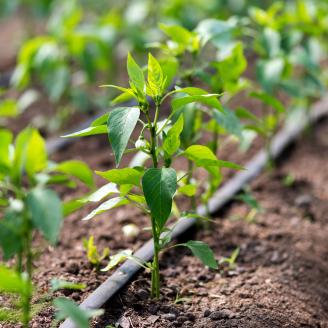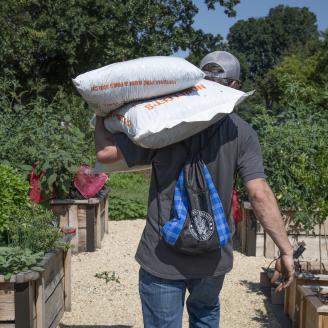Ohio Urban Agriculture
NRCS serves all agriculture – large to small, conventional to organic, rural to urban. As American agriculture continues to grow in new directions, NRCS conservation assistance is growing along with it.
Are you farming or gardening in a city or suburb? Urban agriculture provides critical access to healthy food for local communities, as well as jobs, increased green spaces, and closer community ties.
Urban agriculture includes the cultivation, processing, and distribution of agricultural products in urban and suburban areas. Community gardens, rooftop farms, hydroponic, aeroponic and aquaponic facilities, and vertical production, are all examples of urban agriculture. Tribal communities and small towns may also be included.
Common Ohio Conservation Practices
High Tunnel
High tunnels protect plants from severe weather and allow farmers to extend their growing seasons – growing earlier into the spring, later into the fall, and sometimes, year-round.
Benefits of High Tunnels
- Extend growing season
- Improve plant and soil quality
- Reduce nutrient use and pollen and pesticide drift
- Reduce energy use and improve air quality by providing consumers with a local produce

Microirrigation
Microirrigation systems are installed to efficiently and uniformly apply irrigation water and/or chemicals directly to the plant root zone and maintain soil moisture for optimum plant growth.
Benefits of microirrigation:
- Uses less water
- Reduces pest problems
- Surface crusting is reduced
- Joint management of irrigation and fertilization

Raised Bed
Raised beds and container gardens refer to improved areas of soil elevated above ground level where plants can grow. Container gardens should include access to sunlight and growing media such as water, potting soil and/or fertilizer.
Benefits include:
- Improved drainage
- Looser Soil
- Fewer weeds and pests
- More accessible gardening
- Less severe soil erosion

